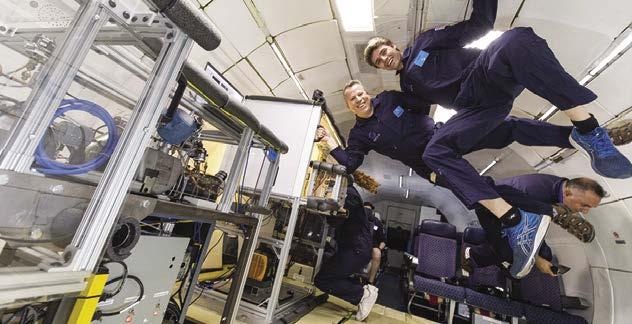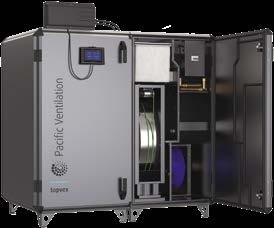Refrigerant Update
CATCH‑UP ON THE PHASE‑DOWN It’s been almost four years since Australia started its HFC phase‑down. So, how are we travelling? Refrigerant management is one of the juiciest low‑hanging fruits when it comes to preventing global warming. Simply by transitioning away from working fluids with a high global warming potential (GWP), we can avoid 0.5°C of global warming. The Kigali Amendment to the Montreal Protocol has established targets for doing this, and at last count, 124 nations had signed up, including China and India. The US is still to ratify formally, but has signalled its intention to sign, and has already put legislation in place to start the transition.
We started the process at the beginning of 2018, and although many aspects are working well, some parts of the refrigerant bank are not responding as hoped. In response, the government and industry are looking at tweaking the system in three key areas.
R410A
Australia has also signed, and is meeting its obligations via the HFC phase-down, implemented through the Ozone Protection and Synthetic Greenhouse Gas Management Act 1989 and associated regulations that establish a quota system for imports of HFCs as bulk gas. This sets out steps over the next 15 years to reduce the overall CO2e value of our refrigerant bank.
Earlier this year, the federal government proposed an import and manufacture ban on small AC using a refrigerant with a GWP over 750 – in practical terms, a ban on units using R410A. The ban would apply to units with up to 2.6kg refrigerant charge. Air conditioners covered would be non-ducted units including split systems, window/wall‑mounted units and portable air conditioners. Equipment already in Australia would not be affected.
The HFC phase-down in Australia will see an 85 per cent reduction in bulk imports of HFCs by 2036.
This step is something of a no-brainer. According to the latest Cold Hard Facts report, nearly all new units now run on R32.This would effectively ban the import and manufacture of small AC using the refrigerant R410A which has a GWP of 2,088. Industry responded positively to the plan, and is now waiting for the government to take the next steps.
R404A A bigger issue, highlighted at the AIRAH Refrigeration Conference earlier this year, is the persistence of R404A. This high-GWP refrigerant is used in low- and medium-temperature refrigeration applications, such as commercial refrigeration, supermarket display cases, cold rooms, transport refrigeration and process cooling. With a huge GWP of 3,922, R404 is considered an outgoing refrigerant. But in his presentation on refrigerant solutions, Kirby HVACR’s Brett Hedge, M.AIRAH, confirmed there are still alarming levels of use. “In 2020 the use of R404A actually grew,” said Hedge. “Alternatives like R448 and R452 have a mere presence of about 5 per cent of the volume.” While Hedge – who chairs AIRAH's Refrigeration special technical group (STG) – applauded the work being done in supermarkets to move away from R404A – often to transcritical CO2 solutions – he warned that smaller jobs were too often going with the lowest‑cost option. “The phase-down is providing little or no incentive for any applications to change,” he said. “R404A is still the cheapest low-temperature refrigerant that is available.” AIRAH, with support and guidance from its Refrigeration STG, has called on the government to introduce a limit on low- and medium-temperature refrigeration equipment that uses R404A, similar to that proposed for small AC using R410A.
R134A Another other area requiring action is mobile air conditioning. In Europe, the ban on new cars with R134A was introduced in 2015 and they have mainly switched to R1234yf, with some CO2. The US is also well into its transition. Australia, in contrast, is lagging. Very few cars are imported with R1234yf, despite it having a GWP of less than one compared to 1,430 for R134A. This outgoing refrigerant still represents 30 per cent of our bulk imports, to service mobile air conditioning. “This is another area where we’ve absolutely needed a government signal,” says Refrigerants Australia Executive Director Greg Picker. “Even more than 404A because it’s simpler. It’s one equipment type: car air conditioners. There are only two or three manufacturers in the world. And it’s already happened around the world in many places. The sooner we can change what’s coming in in new vehicles, the sooner we start to transition our fleet.” ■
WANT TO KNOW MORE? AIRAH’s submissions to government are available at www.airah.org.au/advocacy For more information about AIRAH’s Refrigeration STG and its activities, go to www.airah.org.au/refrigeration 24
|
HVAC&R Nation
|
www.airah.org.au/nation
|
October 2021








